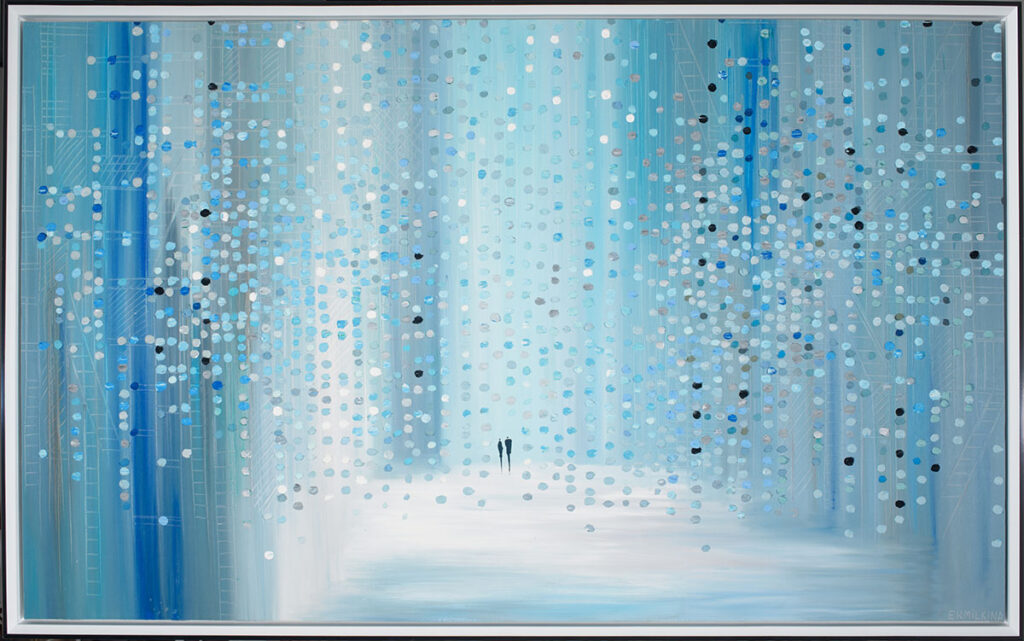One of the most popular forms of art that our professional framing business deals with is canvas art. Canvas art is popular for many reasons. The texture of the canvas adds depth and visual interest to the artwork, creating a tactile surface. The flexibility of canvas allows for larger-scale works to create a bold statement in a room. The porous nature of canvas absorbs and reflects light differently than other surfaces, adding richness to the artwork. Canvas is durable and long-lasting. It can also provide a more timeless feel when framed in a traditional frame or a more contemporary feel when framed in a floater frame or gallery-wrapped. The feeling you are trying to convey can help you decide whether or not to frame your canvas art.
Framing Canvas Art: What You Should Know
If you do decide to frame your canvas art, there are several considerations to keep in mind . Some of the key considerations are:
-
- Style of framing – There are three styles of framing for canvas art: traditional frames, in which the surface of the canvas is flush with the frame; floater frames, in which the canvas is mounted inside the frame leaving a gap between the canvas and the frame to create the appearance that the art is “floating” inside the frame; and gallery wraps, in which the canvas is wrapped around a wooden framework or stretcher bar and all edges of the canvas are visible with no outer frame. To choose a style of framing, consider whether your canvas has painted sides, and, if so, if you want them to be visible. If you want to hide the sides of the canvas, opt for a traditional frame. If you want the sides of the canvas to be visible, opt for a floater frame or a simple gallery-wrap.
- Style of Art – Choose a framing style and moulding that complements the style, colors, and mood of the artwork. If you want an old-world feel, choose a traditional, ornate frame. If your art is contemporary, you may want a more minimalistic floater frame or even a simple gallery wrap. Gallery wraps, which leave all sides of the canvas exposed, are a good choice for edgy art.
- Depth of Moulding – Regardless of framing style, all canvas art is typically stretched around a wooden stretcher bar, which can be used to adjust the depth of the canvas from the wall or within the frame. Thinner stretcher bars can be used to prevent a canvas from protruding out from the back of a traditional frame so that the frame can sit flush with the wall. Thicker stretcher bars can be used to adjust the height of the canvas within a floater frame to bring the surface of the canvas flush with the top edges of the frame. The thickness of the stretcher bar can also be used to control how far the surface of a gallery-wrapped canvas stands out from the wall.
- Hanging hardware – While most canvases can be hung with two D-rings, larger, heavier canvases may require hanging hardware that provides additional support, such as cleats.
- Professional framing – If you’re unsure about framing choices and styles and want the best possible result, consult a professional framer who can guide you through the process of selecting the best framing method and mouldings for your canvas art.
More About Rosenbaum Framing
Whether you want to frame your canvas art in a traditional frame or floater frame, or simply need it gallery wrapped, Rosenbaum Framing is an experienced framer that is here to assist you with whatever you need. Contact us today to learn more about our fine art framing and canvas stretching services.

